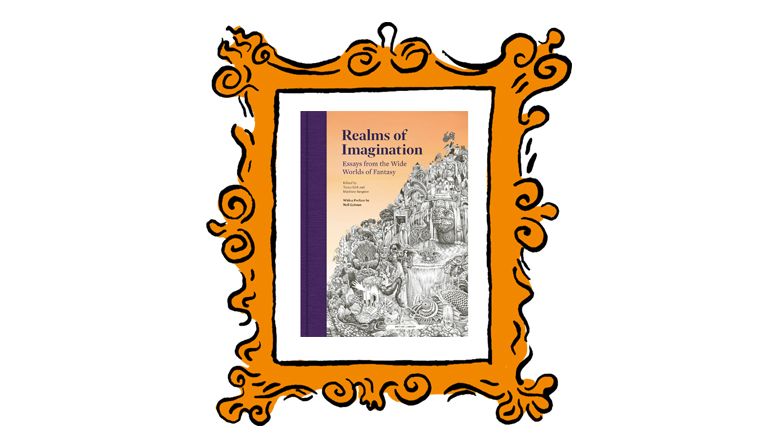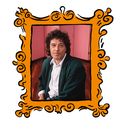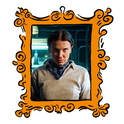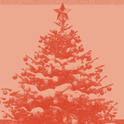In the uncomfortable darkness of a lecture theatre, a lone figure stood eight feet high on a stage. Clad in an expansive white skirt, her naked torso basked in a dim red glow. In the half-light you noticed words embroidered on the fabric; these were the names of some of those accused of witchcraft in England. The performance began with a swell of sound and the crackle of encroaching fire. Projected flames consumed the stage. The performer gasped as though inhaling smoke. The whole skirt breathed with her like some great lung, keeping time with the throbbing soundtrack. As flames rose a sense of panic filled the room. The crescendo broke, the skirt fell and a naked woman with outstretched arms was suddenly illuminated by a spotlight. Uneasy silence descended. In that pause all the fears the performance stirred seemed to settle, as if all those demons and paranoias that stalk winter nights had returned to slumber.
This was bonfire night at the British Library, but instead of the usual Guy Fawkes effigy we had just witnessed the burning of a witch, a performance that closed the Festival of the Accused. Through my role in the public engagement team, I co-curated this festival with artist Amy Kingsmill, who stood atop the symbolic pyre. In an endurance piece titled Light Source, Kingsmill memorialised those persecuted in the witch trials of European history and illuminated those who face similar persecution today. The festival’s aim was to explore the dark history of the English witch hunts, while also celebrating modern devotees of “the craft” and delving into the current craze for witches in fantasy fiction, what some have christened “witcherature”.
The performance was a memorial, but it was not a morbid one. It ended with a stark white light on a defiant figure, a light made brighter for the darkness it pierced. Throughout the day of talks with esteemed authors, artists and historians, the long and ever-renewing power of the witch was brought to the fore. It struck me then that these winter nights are the perfect time to revel in old, eerie ideas: I find there is something peculiarly ghostly about the festive season and its march towards the winter solstice.
Indeed, the whole British Library seems to have turned dark and fantastical of late, what with the launch of its exhibition “Fantasy: Realms of Imagination”, running now until 25th February. Here over 100 items from the past and present vie for our attention, speaking to our enduring need for escape, to embellish our dreams and depict our fears. The exhibition taps into the huge contemporary popularity of the fantasy genre in publishing, television, cinema and gaming, but also digs into the murky, fertile roots of its origins, with displays of historic manuscripts such as Sir Gawain and the Green Knight. Together these objects invite us to revel in the unknown, to turn inwards to our imaginary landscapes as the days turn away from the warmth of summer.
In one section of the exhibition, titled “Weird and Uncanny”, a painting by the Victorian-era artist Richard Dadd stands out. Dadd was famous for his obsessively detailed fantastical scenes, most of which he made while in psychiatric care. In perhaps his most infamous, The Fairy Feller’s Master-Stroke, we see a thicket of brambles, vines and sycamore seeds wrought in hallucinogenic detail and populated by miniature figures—the fairy folk. In a central patch a cloaked figure, the white-bearded patriarch, stretches his arm as though enveloping the fairies around him. The grey-green faces of these small but well-dressed fairies are elongated, blending into the rippling undergrowth in a way that unsettles the eye. It’s not certain if the realism of the plants render the fairies more or less real; the entire environment has taken on a weird feeling that we can’t seem to place. It is as though, in this autumnal scene, where thorns glisten threateningly, the fantasy grows more potent as the vegetation sheds and retreats.
Arthur Schopenhauer, the patron saint of pessimism and perhaps the Father Christmas that every melancholic wishes for, captured a similar feeling when he said that the imagination is most active when the external senses are restrained. It’s under the influence of quiet, twilight and darkness, as Schopnehauer would argue, that the imagination “comes into play”. It’s the falling of leaves and the gothic bleakness of winter that provide the perfect backdrop for flights of fantasy.
Much has been made of the connections between pagan festivals like Yule and the Christian traditions we celebrate today. In pagan Bavaria, for example, the magical visitor was not a jolly, white-bearded man but a deity with a dual nature. Perchta or Berchta (the myths are tangled), whose name meant “the bright one”, could be a beautiful goddess as pure as snow who rewarded well-behaved children with gifts. But she could also be an ugly and frightening woman with one cloven foot, or sometimes with the foot of a goose. From her monstrous side the figure of Krampus seems to have developed, a terrifying humanoid goat replete with horns and teeth to scare spirits and punish the bad. These closely linked figures mirror the peculiar oscillation of darkness and light that is felt as the year draws to its end.
As you sip your mulled-wine I invite you to think on the dual nature of this being and her relation to the winter months. As we near the winter solstice, the dying of the year, I encourage you to revel in the darkness and the flashes of fantasy that might meet you there.









